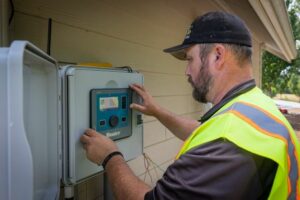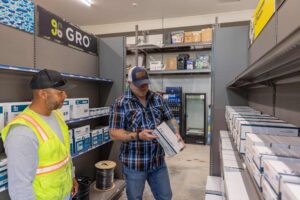Irrigation Winterization in Vancouver WA
Landscaping and yard maintenance in Vancouver WA has many perks but our freezing temperatures require irrigation winterization.
Fall Lawn Care

For Irrigation Services, Contact Us Today.
Landscaping and yard maintenance in Vancouver WA has many perks but our freezing temperatures require irrigation winterization. In this blog we’ll go over the basic protocols for irrigation winterization to help protect your landscape and property.
Irrigation winterization is imperative to preserving the hardware that makes up your irrigation system. Our landscapers cannot stress enough how important it is to protect your irrigation system. When water freezes it expands significantly enough to burst the hardware that makes up your irrigation system. Locating and replacing broken hardware means digging up the very yard and landscape you are trying to protect.
For More Info on our Irrigation Services, please visit our Irrigation Page

Every irrigation system has its own procedure for winterization. We recommend consulting your owner’s manual for the exact recommended procedure for your system but we will provide a broad overview of the elements that make up every system below:
Firstly, shut off the water via the main valve (often found near your water meter). Your system may have valves to prevent backflow, be sure to close these as well.
Secondly, shut off any timer (or put it in rain mode if shutting it off will lose the current settings).
Thirdly, drain the water from the system. This is the biggest step and has the most complications, be sure to consult your system’s manual before starting. There are three main types of irrigation draining: Manual, Automatic, and Blow-Out Draining. This step is critical to irrigation winterization and protecting your system, if you do not have the proper equipment or want to ensure your irrigation is winterized correctly please reach out to our irrigation professionals here.
- Manual Draining systems have shut-off valves at the end of the piping (often at lower elevation points). Slowly open these one at a time (using proper eye protection) and then close them all when they are done draining.
- Automatic Draining systems will drain the system when the main valve is shut off and the system is briefly turned on. However, there will still be remaining water in the valves of the system. Be sure to loosen the plastic caps with wires coming out of them (solenoids) on each valve, this will allow for air to replace the remaining water in the system.
- Blow-Out Draining systems have an adapter that allows for compressed air to be fed into the piping to force the water out. The challenge with these systems is that most at home air compressors cannot produce the necessary volume of air to push the water out without any of it sneaking back in. This will lead to leftover water in the pipes, and potential breaks from freezing.
Lastly, be sure to insulate above-ground components such as: Main valve, piping, water spigots, or backflow preventers (without blocking drainage or airflow vents).
If this seems like too much for you, we are here to help!
However, if you’re up for the challenge we’re here to help supply any material/component needs you may have.
Check out our irrigation hardware supply here or visit us in person here:
7208 NE 101st St.
Vancouver, WA 98686


